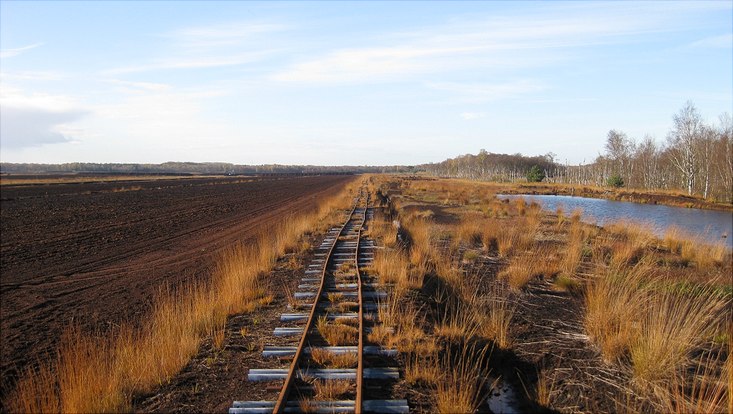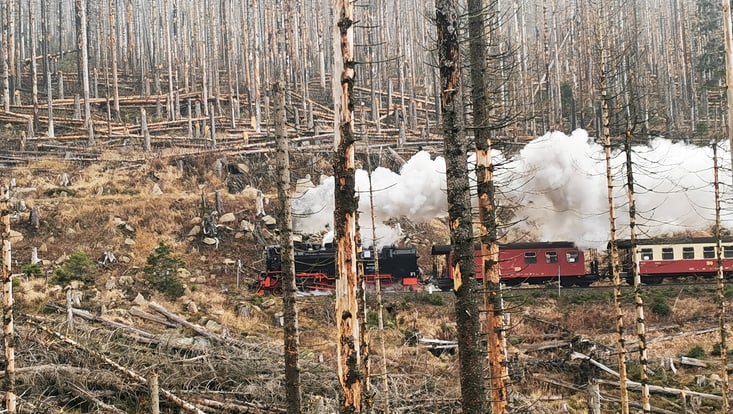Climate Protection: It’s Worth Rewetting Dry Peatland!
14 December 2020, by Dr. David Holl

Photo: UHH/D.Holl
Moors cover three percent of our planet’s land surface, but store twice as much carbon as all forests combined. But if peat is extracted and the moorland soils are drained, they can become veritable carbon dioxide factories.
In Germany, natural moors once covered an area as large as Schleswig-Holstein and Hamburg. In many places, the peat has been excavated for heating, and entire moors have been drained to provide land for agriculture and forestry. Even today, peat is valued as a resource for horticulture; as a result, nationwide only roughly one percent of the original moors are still intact. Wouldn’t it be a major step towards climate protection if we were to return moors to a near-natural state – in other words, restore them?
At Himmelmoor, north of Hamburg, together with colleagues from Universität Hamburg’s Center for Earth System Research and Sustainability (CEN), I am investigating how emissions of greenhouse gases from peat soils change when moors are restored. Parts of Himmelmoor have gradually been rewetted since the 1980s.
In these wet peat soils, plant matter remains largely intact, since decomposition by microorganisms is hindered. This means that most of the carbon stored in the soil is preserved. However, there are other microorganisms at work that produce the greenhouse gas methane. It’s perfectly normal for natural moors to emit methane, but these emissions end once a moor is drained. Initially, in terms of the climate, that’s very positive. However, once the soil is dry, oxygen can penetrate it, and the stored carbon is then converted into carbon dioxide (CO2).
So, on the one hand, wet peat soil emits methane; on the other, drained and dry soil releases carbon dioxide. We’re interested in what quantities of these gases are released in each scenario. In other words, is wet or dry peat soil climate friendlier?
Himmelmoor offers ideal conditions for comparing the two. For our investigations we selected a 1.4-square-kilometer area in the center of the moor, where half of the soil had already been rewetted. We built a six-meter-high tower with measuring equipment between the two areas, and over a two-year period recorded how much CO2 and how much methane escaped into the air from the soil. This allowed us to directly compare the wetted and drained areas. The data clearly showed: as soon as the water level was raised, up to 40 percent less CO2 was released. At the same time, however, methane emissions increased – by up to 80 percent. Yet, even though methane is much more harmful for the climate than CO2, by the second year, the restored area’s greenhouse-gas balance was better than that of the untouched area – because CO2 emissions continued to fall.
Admittedly, overall Himmelmoor continues to release large amounts of greenhouse gases. But my measurements confirm that restoring moorland results in a huge reduction in CO2 emissions. Nevertheless, making these areas into effective carbon sinks could take several decades.
David Holl
Dr. David Holl is a soil scientist and peatland expert at Universität Hamburg’s Center for Earth System Research and Sustainability.
Scientific Paper
Holl, D., Pfeiffer, E.-M., and Kutzbach, L.: Comparison of eddy covariance CO2 and CH4 fluxes from mined and recently rewetted sections in a northwestern German cutover bog, Biogeosciences, 17, 2853–2874, https://doi.org/10.5194/bg-17-2853-2020, 2020.
Newspaper
This article was first published as a guest article in the Hamburger Abendblatt as part of a monthly series on climate research. Find all articles of the series here.


